How to Store Wine at Home
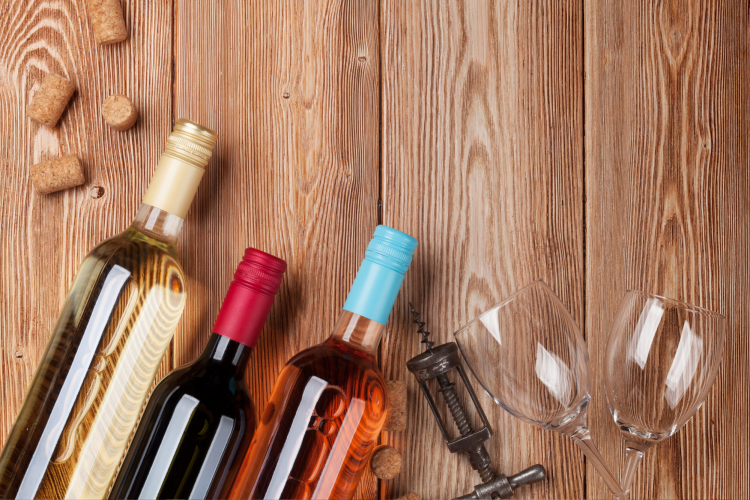
Are you wondering how to store wine without causing the wine itself to degrade and spoil before you’re ready to enjoy it? While it’s true that wine can be finicky, storing wine really isn’t all that complicated.
As long as you follow a few important rules, the process for storing wine is relatively simple and straightforward. We’ve compiled the essential tips and tricks for how to store wine, both unopened and opened bottles, so that it stays as fresh as possible for as long as possible.
- How to Store Wine
- How to Store Red Wine After Opening
- How to Store White Wine After Opening
- Learning More About Wine


How to Store Wine
Temperature: Keep It Cool and Consistent
Most people immediately think of a cellar for wine storage, but how do you store wine without a cellar? When it comes to how to store wine, the temperature just might be the most important factor.
The ideal range for storing wine is between 45º-65ºF, but you can find the exact recommended temperature for a specific wine by consulting the manufacturer. Storing wines at temperatures below 25ºF will cause them to freeze, while temperatures above 68ºF will accelerate the aging process and degrade volatile compounds.
You’ll also want to keep the temperature consistent, as fluctuations can cause the cork to contract and expand a bit, and these small adjustments can cause air to sneak in or out of the wine. Keep an eye on the humidity level as well — a humidity level around 70% will help you avoid drying out the cork.
If you really want to keep your wine at the optimal temperature conditions, you can invest in a wine fridge!

Light: Store It Someplace Dark
UV rays from the sun can degrade wine and cause it to age or spoil prematurely. In fact, even fluorescent light bulbs can have a similar effect and degrade wine over time. Thus, choosing a dark place free from sunlight, and ideally where you can keep the lights off, is an important factor concerning how to store wine for the long term.
Position: Store Horizontally
Once you’ve found an ideal location (cool and dark), a horizontal position is best when it comes to how to store wine bottles. Placing the bottle in a horizontal position keeps the liquid against the cork, which does two important things: keeps air from seeping in (or out) and prevents the cork from drying out.
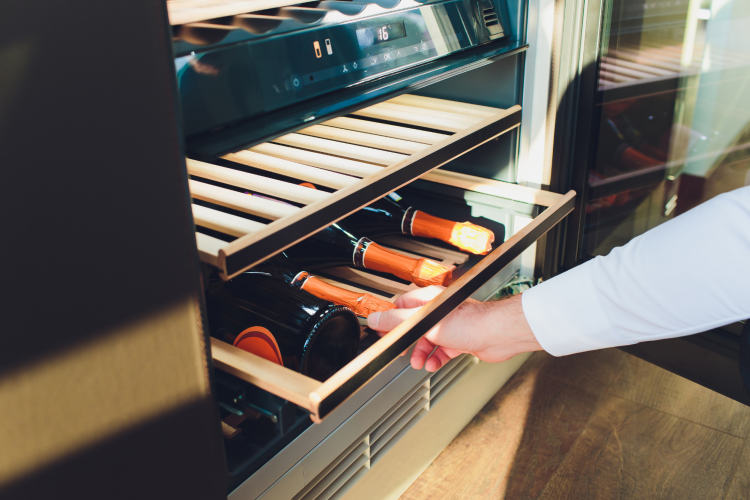
Avoid Vibrations and Shaking: Don’t Move It
After storing your bottles horizontally, leave them undisturbed until you’re ready to drink them. Vibrations and constantly moving the bottle can actually damage wine. This is also why you’ll want to avoid storing your wine in the fridge unopened for long periods of time. Keeping the bottles still is important for how to store wine properly.
Avoid Strong Odors
Wine can actually breathe through the cork, which is slightly porous, and this means that strong odors can seep in through the cork and taint the wine. Do your best to store your wine in a place away from any strong odors, especially strong and unpleasant odors like trash, garlic and other food or cleaning supplies.
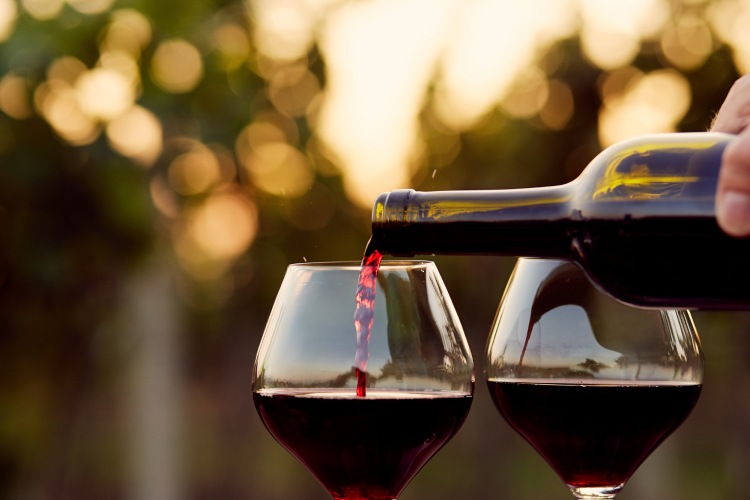
Know the Expiration Date
Even though there are lots of tips to help wine last, remember that most bottles aren’t meant to last forever. In fact, most wines are meant to be consumed within a year or two. In general, white wines can be stored for around one to two years and red wines for up to three years.
Even following all the right steps for how to store wine won’t stop wine from naturally aging and spoiling eventually. If you also want to know: "How long is wine good for after opening?", the answer varies based on the type of wine and how you store it, but an average is three days to a week if re-sealed tightly and stored in the refrigerator.
How to Store Red Wine After Opening
You’ve opened a bottle of wine, but now you can’t finish it — what now? Does wine freeze? Yes, but it may be better to try re-corking. Here are a few tips and tricks for how to store opened wine so that it maintains as much of the flavor and body as possible.
How to Re-Cork an Open Bottle
The most important thing is to reduce oxygen exposure, which means you’ll need to re-seal the bottle as tightly as possible and as quickly as you can. This can be done by placing some wax paper around the original cork and sliding it back into the opening, or you can purchase specially-designed wine stoppers that remove excess air upon sealing.
These specialty wine stoppers can keep your leftover wine fresh for about a week, which can make them a worthy investment if you don’t usually finish a bottle in one go.
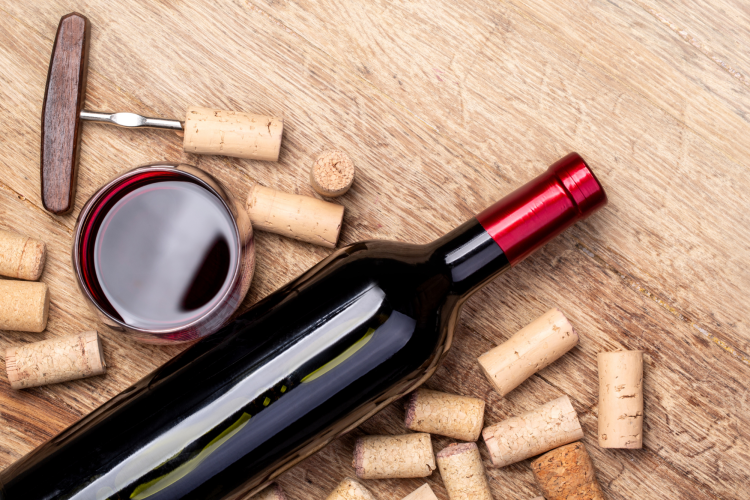
How to Store Wine Bottles After Re-Corking
Once you’ve sealed up your open bottle, you’ll want to store it upright (vertically) and keep the temperature steady. Refrigeration will help slow the deterioration of the wine, so storing an opened bottle of wine in the fridge will help it last another three to five days. If you opt not to store it in the fridge, you’ll want to make sure it avoids exposure to direct sunlight — so instead of leaving it on the counter, place it upright in the cool and dark pantry.
When it’s time to re-serve your red wine, avoid heating it up in the microwave. The best way to warm it up is to place it in a lukewarm water bath until it reaches the right temperature. Then, pour and enjoy as if you’d just uncorked the bottle for the first time!
How to Store White Wine After Opening
So what about storing opened white wine? You’ll pretty much want to follow the same process as outlined above: reducing oxygen exposure (i.e. recorking with a tight seal) and storing the bottle upright in the fridge. This will preserve the white wine, and since white wine is usually best served chilled, you won’t have to worry about warming the wine when you decide to finish the bottle!
Learning More About Wine
There’s a whole lot more to wine than simply knowing how to store wine. If you’re curious to learn more, wine tastings are a great place to start. During in-person and virtual wine tastings, world-class sommeliers and wine experts will help you understand the greater complexities underlying wine-making, covering everything from type of grape(s) to the fermentation and aging process. Plus, if you leave the tasting with a few new bottles, you’ll know exactly how to store your new wines even after opening!
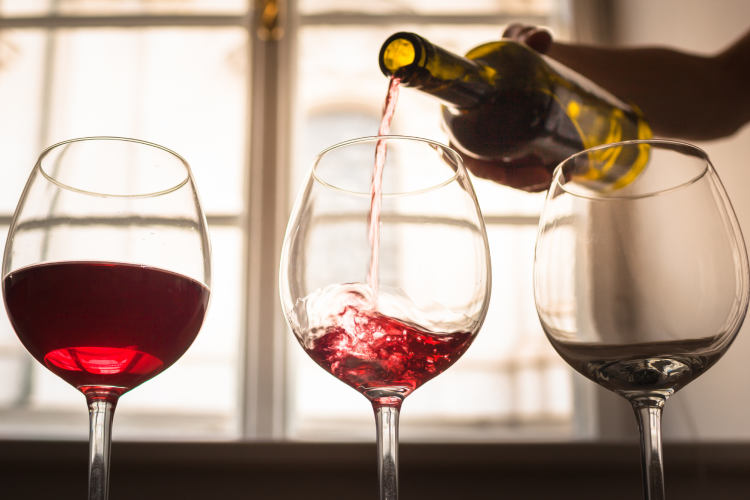
Whether you prefer red, white or rosé, following these tips for how to store wine will help you enjoy every last sip of all your favorite blends without sacrificing any depth of flavor. Even if you find yourself needing to store half a bottle of open wine, you’ll know what to do!
For even more ways to learn about wine, check out other experiences happening on Cozymeal.



FOOD FOR THOUGHT?
Join the conversation.